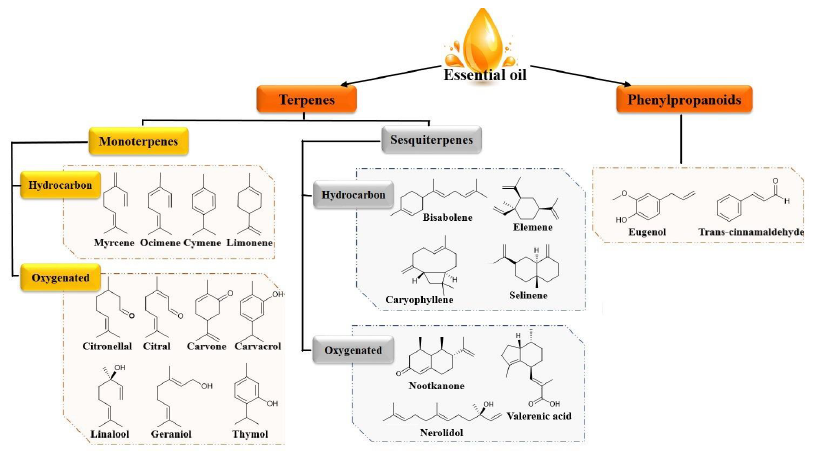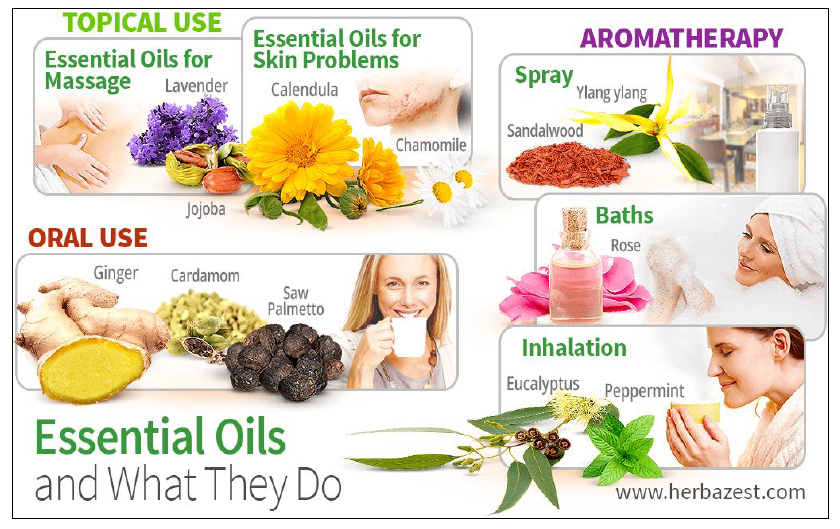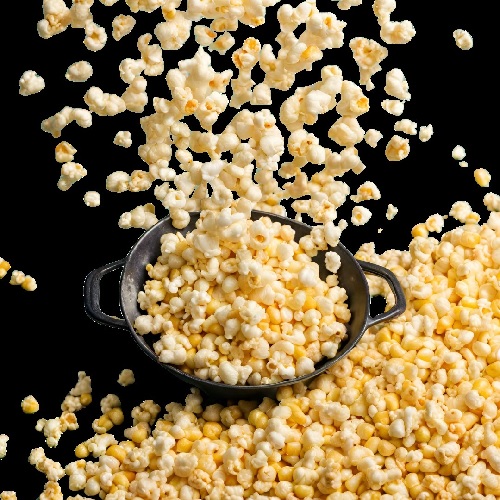Essential oils are volatile liquids that may be extracted from various fragrant plant components, including bark, seeds, flowers, peel, fruit, roots, leaves, wood, fruits, and whole plants. The International Organization for Standardization (ISO) defines an essential oil as "a product obtained from a natural raw material of plant origin, by steam distillation, distillation, by mechanical processes from the epicarp of citrus fruits, or by dry distillation, after separation of the aqueous phase, if any, by physical processes."
These aromatic plant extracts are derivatives of nitrogen, sulphur, and organic molecules, including carbon, hydrogen, and oxygen. Due to the existence of multiple functional groups, these aromatic liquids vary and may take various forms, including aldehydes, alcohols, ethers, ketones, acids, amines, sulphides, epoxides, and others. The great solubility of EO is one of their physical features. Low solubility in water is denser than oils and less soluble in ether, alcohol, and fixed oils. At room temperature, EO are typically colourless, liquid, and have a distinct aroma. Measurements of the refractive indices and the high optical activity of these volatile liquids can be used to identify them. Uses of Essential oil.

Uses of essential oil
Due to their flavour, fragrance, and preservation qualities, EO have been utilised as remedies since ancient times. EO and synthetic phytochemicals are frequently utilised in perfumery as perfumes and in the food and beverage sector as flavourings once the specific phytochemicals can be synthesised with ease. Various EO and their constituent parts provide examples of pharmacological effects, such as those with antimicrobial properties, anti-inflammatory, antioxidant, and anti-carcinogenic properties. Because of these therapeutic qualities, natural ingredients used in medications and cosmetics are being researched. Due to their aromatic constituents, several EO have recently been utilised in aromatherapy, which is considered an alternative medicine since it may enhance mental function and have therapeutic benefits.
Antimicrobial properties of essential oil
Essential oils exert antibacterial activity against gram-positive and gram-negative bacteria by having bactericidal or bacteriostatic actions. Growth of fungus is prone to harm our health and skin. Some EO have powerful properties of fungicide and fungistatic against the filamentous fungi and dermatophytes especially lemongrass oil, neroli oil, aegle oil, palmarosa oil, and marmelos oil. The extensive and powerful antifungal action against a wide scope of parasitic microbes is shown by basil, citrus, fennel, lemongrass, cinnamon, oregano, rosemary, and thyme. Besides, some EO and their compounds have antiviral effects against many viruses. Essential oils namely juniper oil, eucalyptus oil, rosemary oil, tea tree oil, basil oil, lavender oil, oregano and clove essential oils have shown solid antiviral activity against a few non-enveloped RNA and DNA infection.

Anti-inflammatory and anti-insecticidal activity
Numerous EO have anti-inflammatory properties, including eucalyptus oil, tea tree oil, helichrysum oil, lavender oil, and peppermint oil. These oils are used to reduce swelling, inflammation, muscular discomfort and spasms. The EO of myrrh (Commiphoragileadensis), frankincense (Boswellia sacra), and thyme (Tymusfallax) have demonstrated chemopreventive action as well as anticancer effects. Because of their capacity and diversity in anti-cancer action, this is a new topic in cancer research. When used topically, EO such as lemongrass oil, citronella oil, eucalyptus oil, neem oil, and peppermint oil serve to repel insects, pests, and mosquitoes.
Antioxidant
Ageing is a naturally occurring process, but there are many methods to use particular EO to postpone, reduce, and avoid the effects of ageing. Alternatives to numerous chemical creams and lotions include EO. Pomegranate oil, lavender oil, rosemary oil, ylang-ylang oil, and sandalwood oil reduce oxidation-related harm and rehydrate the skin. Additionally, these oils delay the ageing process by stymieing the free radicals that damage the skin's suppleness.
Anti-acne activity
Some essential oils, such as tea tree oil and lavender oil, aid in reducing acne-related inflammation. They are less likely to have negative effects than topical acne treatments that are applied to the skin. EOs come in a wide range of antibacterial and antimicrobial properties. They are less likely to have adverse effects than topical acne treatments that are applied to the skin. EO assist in stopping bacteria from growing on the skin since one of the main reasons for acne is the development of germs in the sebaceous glands, pores, and hair follicles.
Essential oil reduces stress level and migraine
Human stress levels have grown as a result of environmental issues and several other causes, and this stress serves as a risk factor for diseases including hypertension, memory issues, brain ailments, diabetes, and cardiovascular disease. Numerous antioxidant components included in EO made from a mixture of ginger, cinnamon, and lemon leaves can lower stress levels and have calming effects on the brain. EO oils can be used to relax the body's muscles and relieve discomfort. Moreover, EO made from cinnamon, ginger, and lemon leaves contain bioactive chemicals that have been proven helpful in treating migraine headaches. Stress hormones will be generated in the body if the damage continues, making migraines worse. These substances restore cell damage, prevent more cellular destruction, act as a soother and lessen the severity of migraine headaches.
Encapsulation of Essential oil
Due to its antioxidant, antibacterial, antiviral, and antifungal effects, EO subsequently attracted considerable interest in the culinary, agricultural, and pharmaceutical industries. However, Essential oil-oxidation is the main problem limiting the use of it in several fields. The unsaturated fatty acids present in EO lead to increase the risk of lipid oxidation which in turn result in producing numerous free radical species. Besides, EO are also unstable and readily deteriorated, according to various studies, if they are not shielded from outside influences including oxidation, volatilization, heat, and light. Other from these, other characteristics that restrict the reasonable use EO include their poor water solubility, limited penetration, and low bioavailability in biological fluids and tissues. In order to get over the limitations listed; it is essential to build appropriate carriers utilising the encapsulation technique.
The oil molecules are surrounded by wall materials in the encapsulated EOs particles. As a result, employing oils in food composition and cosmetics can have a number of benefits, such as safeguarding them from hostile environments, increasing their solubility and bioavailability, strengthening their controlled release, and avoiding interactions with other products and unfavourable flavour.
By Aishah Abdullah, Lu Lu Taung Mai

The oil molecules are surrounded by wall materials in the encapsulated EOs particles. As a result, employing oils in food composition and cosmetics can have a number of benefits, such as safeguarding them from hostile environments, increasing their solubility and bioavailability, strengthening their controlled release, and avoiding interactions with other products and unfavourable flavour.
By : Aishah Abdullah, Lu Lu Taung Mai
Chemistry Division, ASPer
Tarikh Input: 18/09/2022 | Kemaskini: 18/09/2022 | emma
PERKONGSIAN MEDIA





























